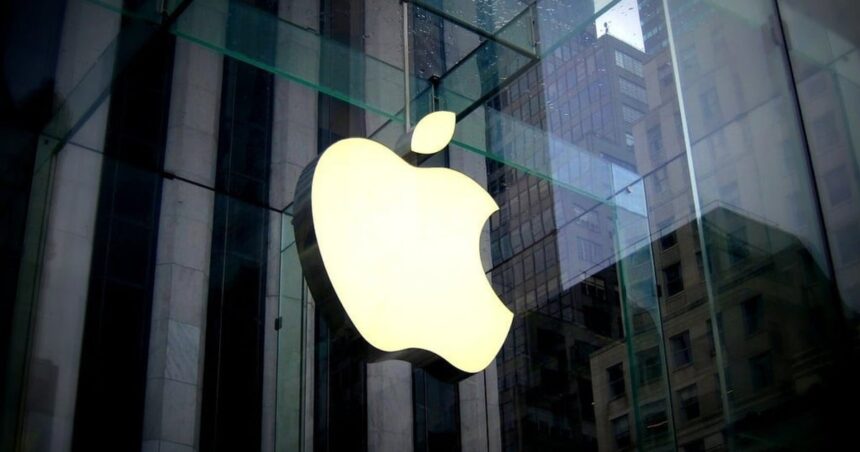Apple’s developer-focused annual WWDC event kicks off in a little over a week, which means that it’s time once again for one of the industry’s most well-established games of farce; in which Apple, the GM, tries to convince us all that this time, no this time, it’s really truly serious about gaming, and we, the players, all try to keep our faces straight and our eyes unrolled.
It’s a ritual that often skips a year or two but always comes back with a vengeance – Apple cites some impressive numbers about hours or dollars spent on games on their platforms, wheels out a famous developer to wax lyrical about the power of the hardware and demonstrate a build of their game, and announces some new iOS features related to gaming.
With love-bombing of the games industry complete for another few years, they promptly delete us from their contacts and pretend not to know us when they walk past us in the supermarket.
The reason we all still pay attention to this merry-go-round, though, is because just as it’s hard to take seriously any of Apple’s claims of yet another Damascene conversion to gaming religion, it’s also impossible not to take seriously the importance of the platforms the company controls.
There are 2.35 billion active Apple computing devices in the world right now. The company doesn’t break down those stats into Macs, iPhones, and iPads, but we know there are well over a billion iPhones in those numbers. Most of those devices are perfectly good gaming devices, at least in terms of what their hardware is capable of.
The existing mobile gaming market – while a large market by any measure – is still only scratching at the surface of the potential growth for the gaming market that could be reached through that installed base. Having one of Apple’s boy-who-cried-wolf moments actually turn into a genuine commitment to gaming would be a major step towards realising that – which makes them very hard to ignore, even if we’re pretty sure we know all the steps to this dance by now.
So what’s this year’s love-bombing going to consist of? We don’t know which development luminary they’ll bring on stage, but it does seem pretty certain that there’s a shiny new gaming-centric app that’s going to be built into the next release of iOS, replacing the rather clunky Game Centre with a more streamlined game launcher (which may encompass games bought on other stores on macOS, a bit like how the Apple TV app shows the next shows in your watchlists on Netflix and other streaming services) and providing various editorial and social features.
It’s not clear whether this is just a new app, or if it actually represents an overhaul of the services layer of Apple’s gaming offerings – for example, whether it’s going to have things like chat, matchmaking, teams and so on implemented in a way that centres on the app but also available in games via an overlay or direct integration through an API.
That sounds fine and dandy, though of course the Game Centre app this will replace is a reminder of one of the previous iterations of the “Apple is serious about games this time” dance.
What’s perhaps more interesting, though we don’t yet know if it’ll get an on-stage mention at WWDC, is that this is coming just as Apple wraps up the acquisition of its first ever game studio – RAC7, the studio best known for creating Sneaky Sasquatch, which has been a very steadily performing hit on the Apple Arcade service since its launch.
Now, there’s a very obvious caveat here before we start speculating about Apple trying to build out a game development studio system: RAC7 is a micro-studio consisting of just two people, so while it’s apparently going to continue operating more or less autonomously as a wholly-owned studio, there’s still a bit of a whiff of an acquihire about the situation.
It makes sense for Apple to bring a studio that’s been pretty solidly committed to Arcade, and successful on the platform, into the fold in this way even if it’s only so that they can be used as consultants and testers for upcoming changes to the service offering.
The core concept of the Apple Arcade offering – a ton of well-vetted games that are guaranteed not to be packed with microtransactions and ads – remains very compelling, especially for parents
While that may be a bit of a letdown to people who got excited at the prospect that Apple would follow its efforts at building up movie and TV production studios with a similar move into gaming, this acquisition does still send a cautiously positive signal.
Apple acquires small companies all the time, but it’s never done so with a games studio before, so the willingness to do this suggests that it is tacitly aware of a lack of internal know-how and skills related to this market segment, and moreover, that it remains quite committed to Apple Arcade.

That second part is important, because honestly, it’s quite easy to forget that Apple Arcade exists sometimes. It’s a bit of a cypher to a lot of the industry, I think; it was launched with much fanfare but it now essentially just sits there occupying zero mindshare for most of the gaming sector and its consumers.
However, there have been some hints that it’s actually quite successful commercially – a tricky thing to measure given that its primary commercial target is driving subscription numbers and retention metrics for the all-encompassing Apple One service, but at the very least there’s never been a suggestion from Apple that it’s unhappy with how it’s performing in that regard.
The core concept of the offering – a ton of well-vetted games that are guaranteed not to be packed with microtransactions and ads – remains very compelling, especially for parents, and it seems reasonable to posit that it’s quietly doing a very solid amount of business off in demographic sectors that rarely engage with the traditional games industry.
This, to some extent, might explain why Apple has ghosted the industry after its most recent bouts of love-bombing; Apple Arcade and the infrastructure that supports it isn’t terribly meaningful to the traditional games industry, but actually accomplishes quite a lot of Apple’s own internal goals with regard to gaming.
That leads us to another crucially important piece of context to bear in mind when watching what the company unveils at WWDC this year – that this may be a series of strategic moves that are less about enticing the games industry to focus on Apple platforms, and more about preparing the ground for the possibility of major parts of the games business simply turning up on Apple’s turf unannounced and uninvited.
That spectre has been raised by various different legislative and legal moves in major markets over the past few years, all of which seem to be pointing in a similar direction – that Apple is going to be forced to open up its platform to third-party app stores, or at the very least streaming apps. The company is still fighting its corner in the courts in a lot of places, but I suspect it knows that the clock is ticking, especially in some of its most lucrative global markets.
While the commercial threat posed by actual app stores is probably minimal (most people just aren’t going to install a whole other app management ecosystem when the path of least resistance works fine), the threat from game storefronts is very real.
Epic, Steam, and Xbox are all potentially going to have functional storefronts on iOS in one form or another in the coming years – which means an end to Apple’s era of taking for granted that games will just keep churning out giant stacks of App Store cash despite being largely held at arm’s length by the company.
Rethinking its gaming app software and buying a small studio are far from sufficient to win a war on this new front if it opens up – but if they indicate some actual momentum building up, they might not be a bad start.





